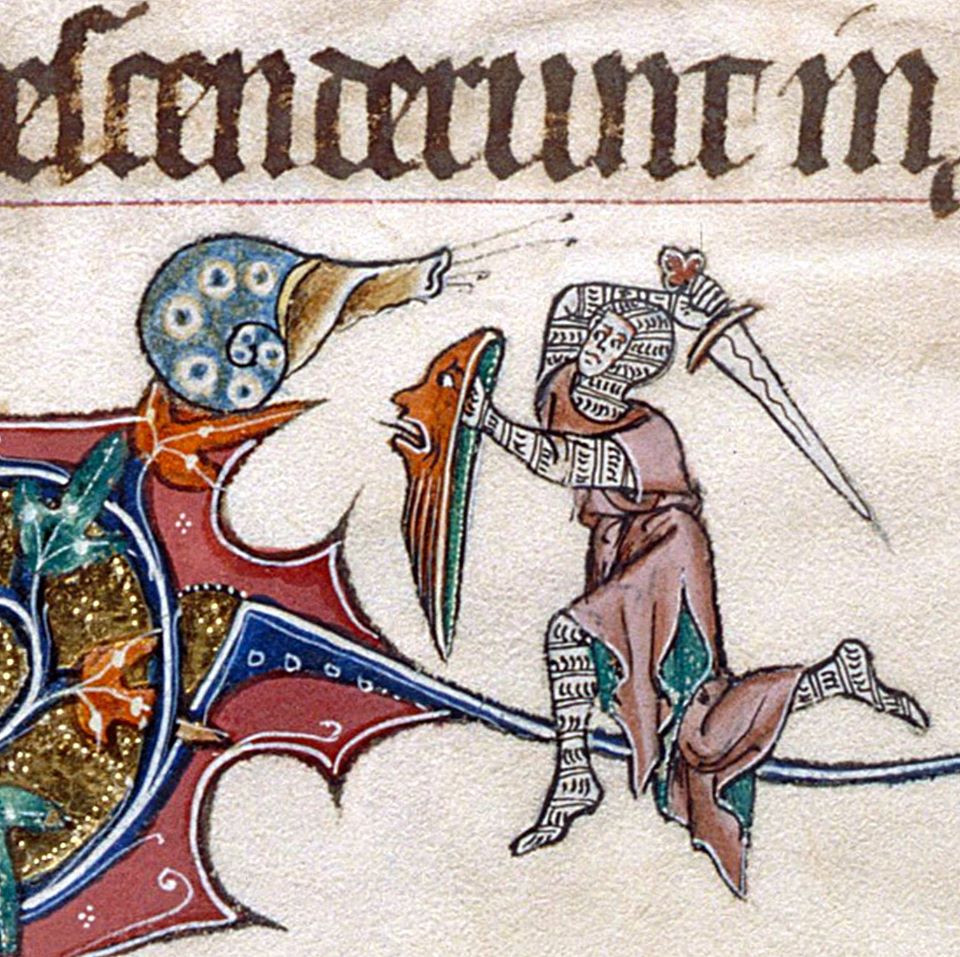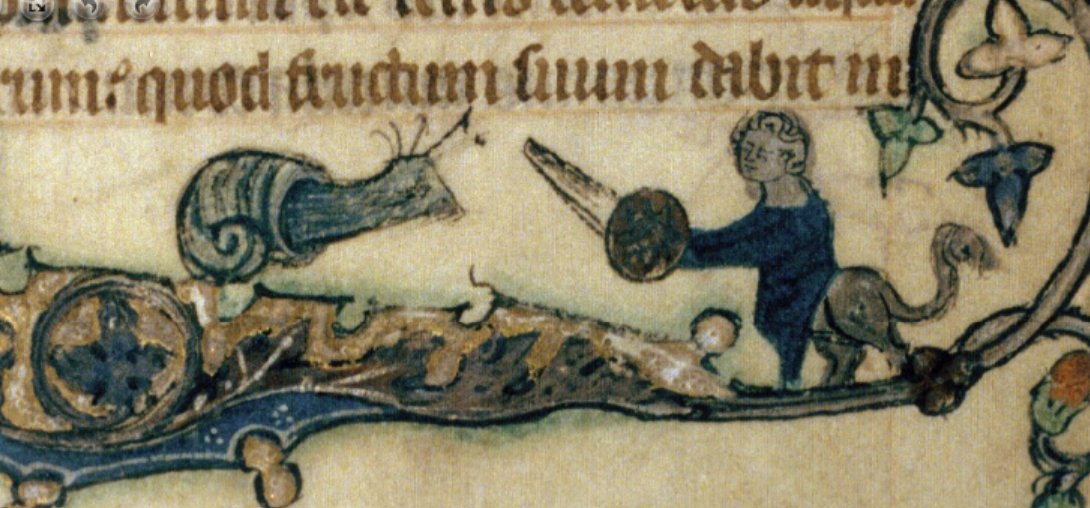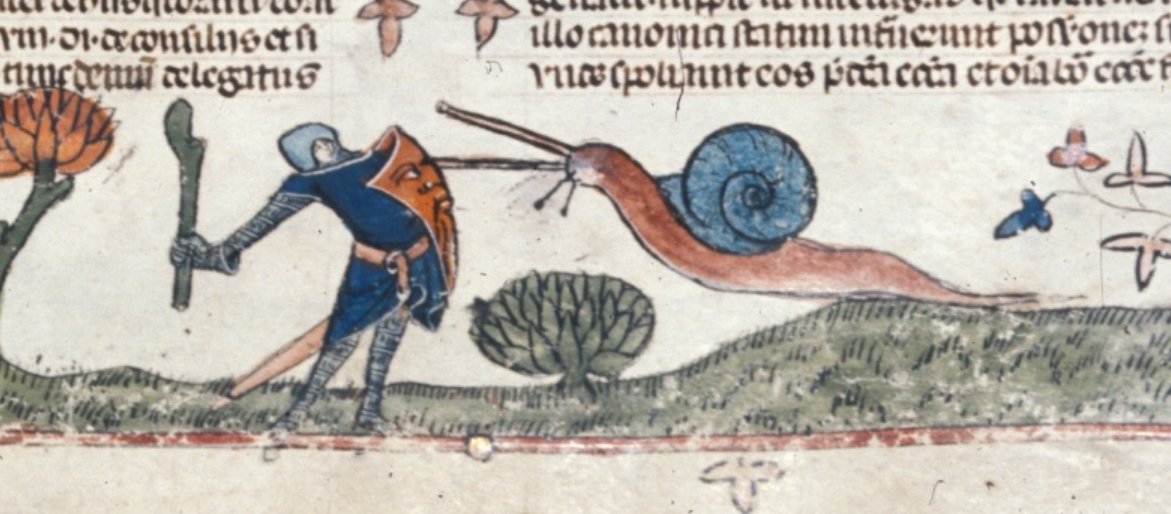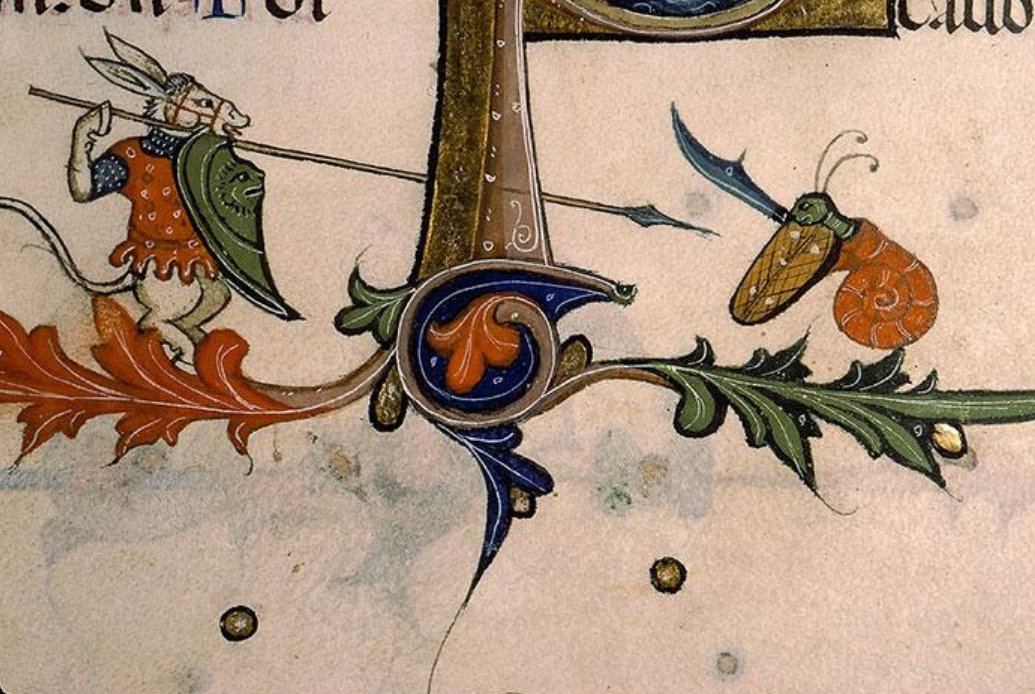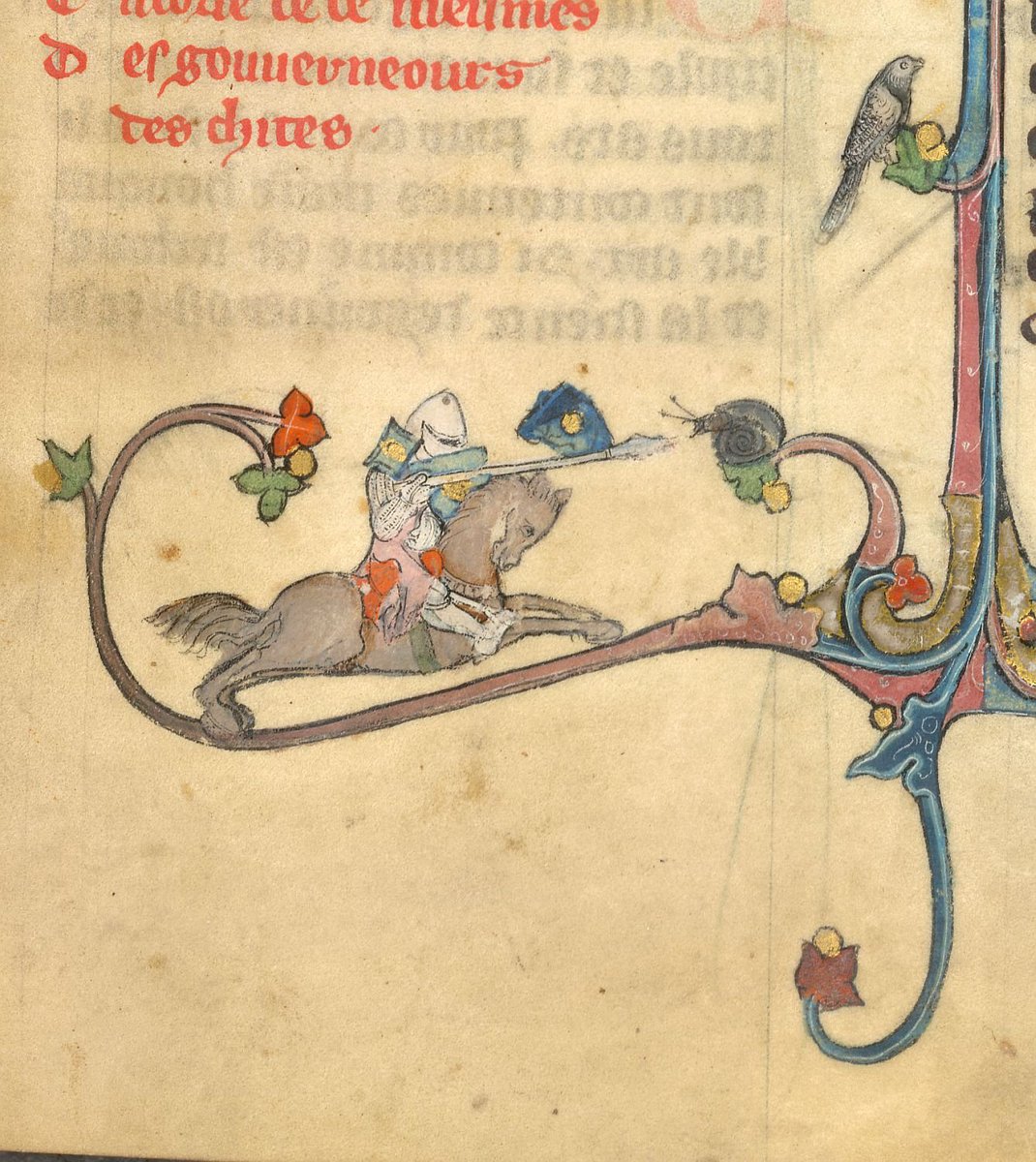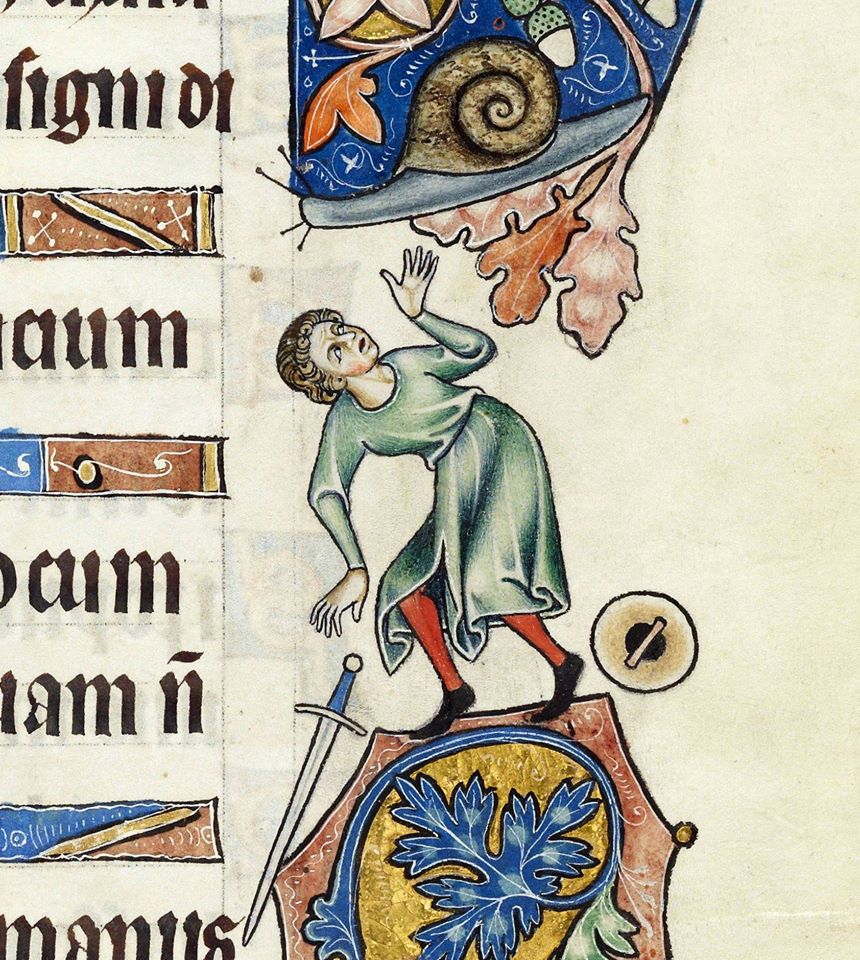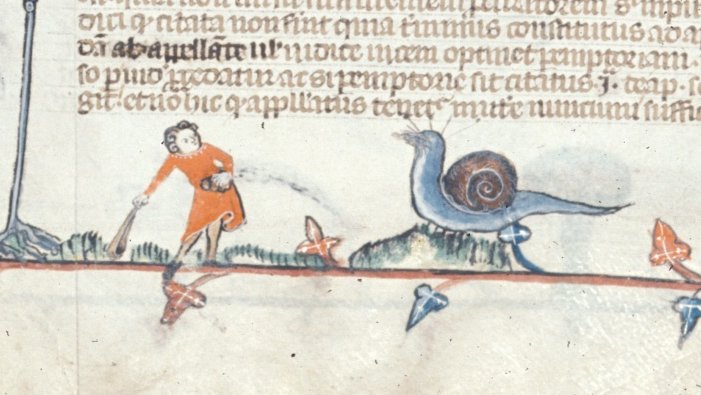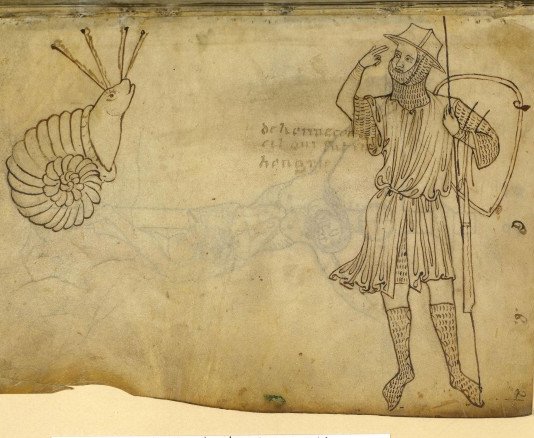Medieval marginalia of knights fighting snails have had a weird heyday on the internet, but did you know that the motif was mostly a brief 20-year fad from 1290 to 1310? They were a kind of medieval meme!
(BL, MS Additional 49622, f. 193v) #MedievalTwitter
(BL, MS Additional 49622, f. 193v) #MedievalTwitter
Scholars have debated what they represent for 100+ years. In 1962, Lillian Randall wrote an article on 70 examples of the image & showed that they almost all came from the same 20-year period in France & England.
(Bod Lib, MS Lyell empt. 4 f. 008r; BL, MS Royal 10 E IV, f. 107)
(Bod Lib, MS Lyell empt. 4 f. 008r; BL, MS Royal 10 E IV, f. 107)
The theme seems to have originated in northern French manuscripts, then spread to English and Flemish manuscripts. Snail combat was everywhere (in manuscript margins) at the start of the 14th-century. Then it just died out.
(Paris, Bibl. Sainte-Geneviève, MS 0143, f. 179v)
(Paris, Bibl. Sainte-Geneviève, MS 0143, f. 179v)
What it means remains debated. Does it represent cowardice? The Lombards? French ridicule of the Italians? All these solutions and more have been proposed by scholars. But what is striking to me is how medieval marginalia had fashions.
(BL, MS Yates Thompson 19, f. 65)
(BL, MS Yates Thompson 19, f. 65)
Snail attacks were briefly The Hot Thing in Medieval European Art, then they were old news and only briefly resurfaced at the end of the 1400s.
(Bodleian Library, MS Douce 366, f. 109r)
(Bodleian Library, MS Douce 366, f. 109r)
Snail fights were a kind of medieval meme: moving more slowly than modern memes because of the slowness of manuscript transmission. Perhaps, like modern memes, their meaning shifted over time.
(BL, MS Royal 10 E IV, f. 45)
(BL, MS Royal 10 E IV, f. 45)
What& #39;s especially cool to me as a medieval scholar is that this 700-year-old meme has become popular again, and there is now a flurry of articles and posts about medieval snail combat.
https://www.thevintagenews.com/2019/02/21/fighting-snails/">https://www.thevintagenews.com/2019/02/2... https://www.smithsonianmag.com/smart-news/why-were-medieval-knights-always-fighting-snails-1728888/">https://www.smithsonianmag.com/smart-new...
https://www.thevintagenews.com/2019/02/21/fighting-snails/">https://www.thevintagenews.com/2019/02/2... https://www.smithsonianmag.com/smart-news/why-were-medieval-knights-always-fighting-snails-1728888/">https://www.smithsonianmag.com/smart-new...
Medieval snail battles are a meme that& #39;s survived CENTURIES and still cool to people.
(BNF, MS Français 19093, f. 2)
(BNF, MS Français 19093, f. 2)
For more, see Lillian Randall& #39;s still-classic article "The Snail in Gothic Marginal Warfare"!

 Read on Twitter
Read on Twitter